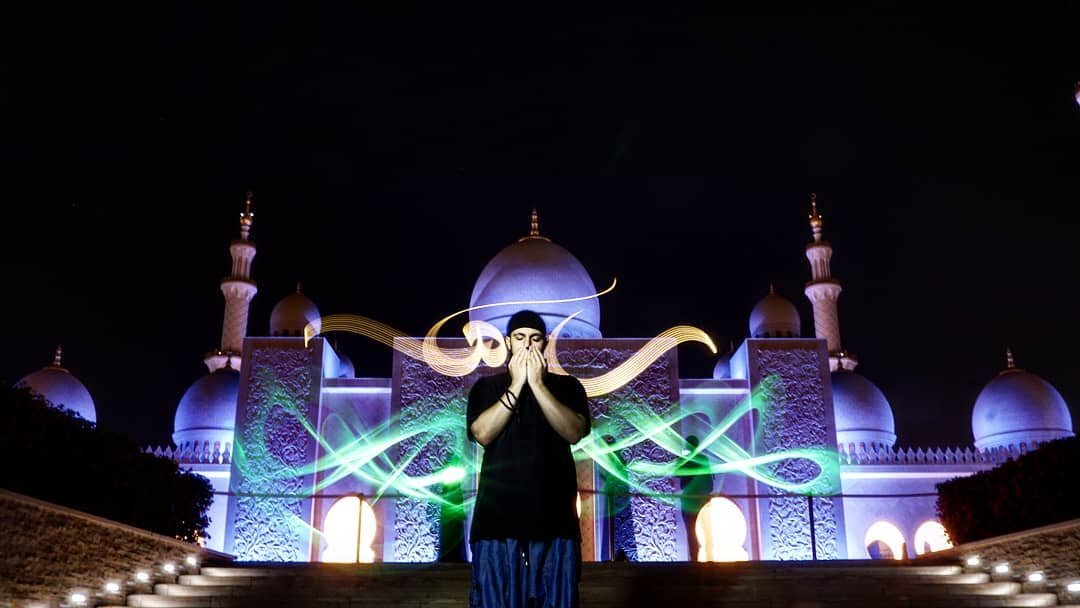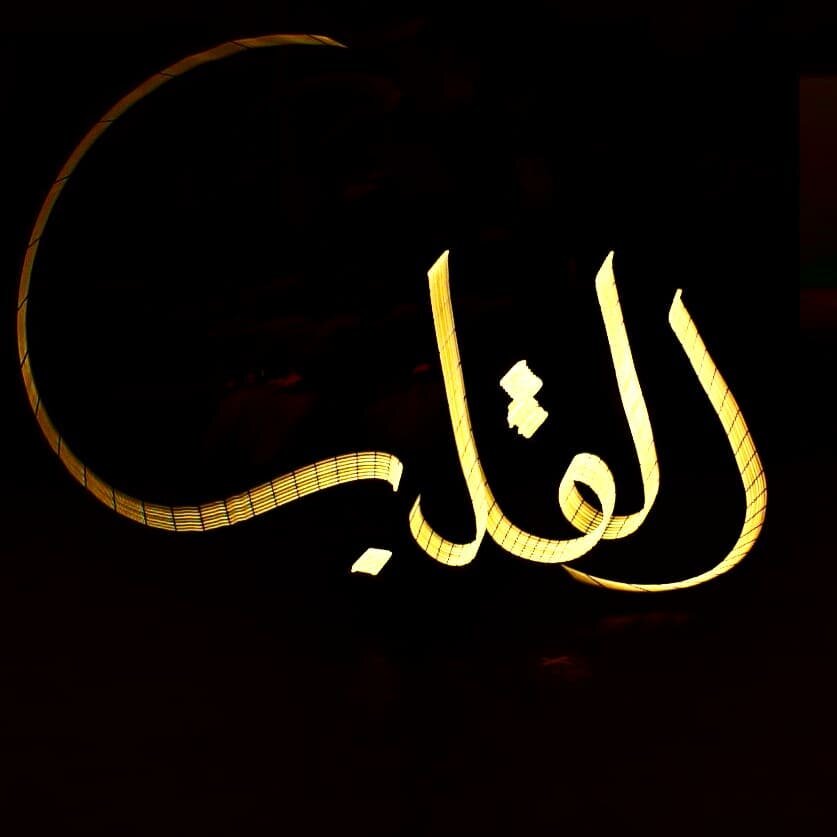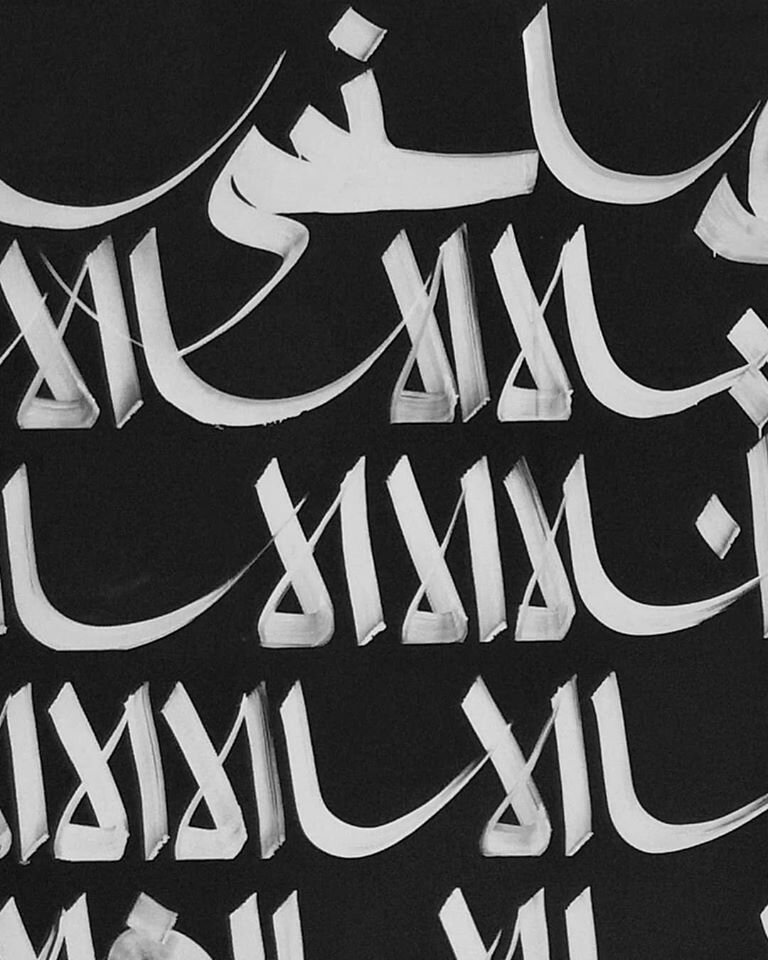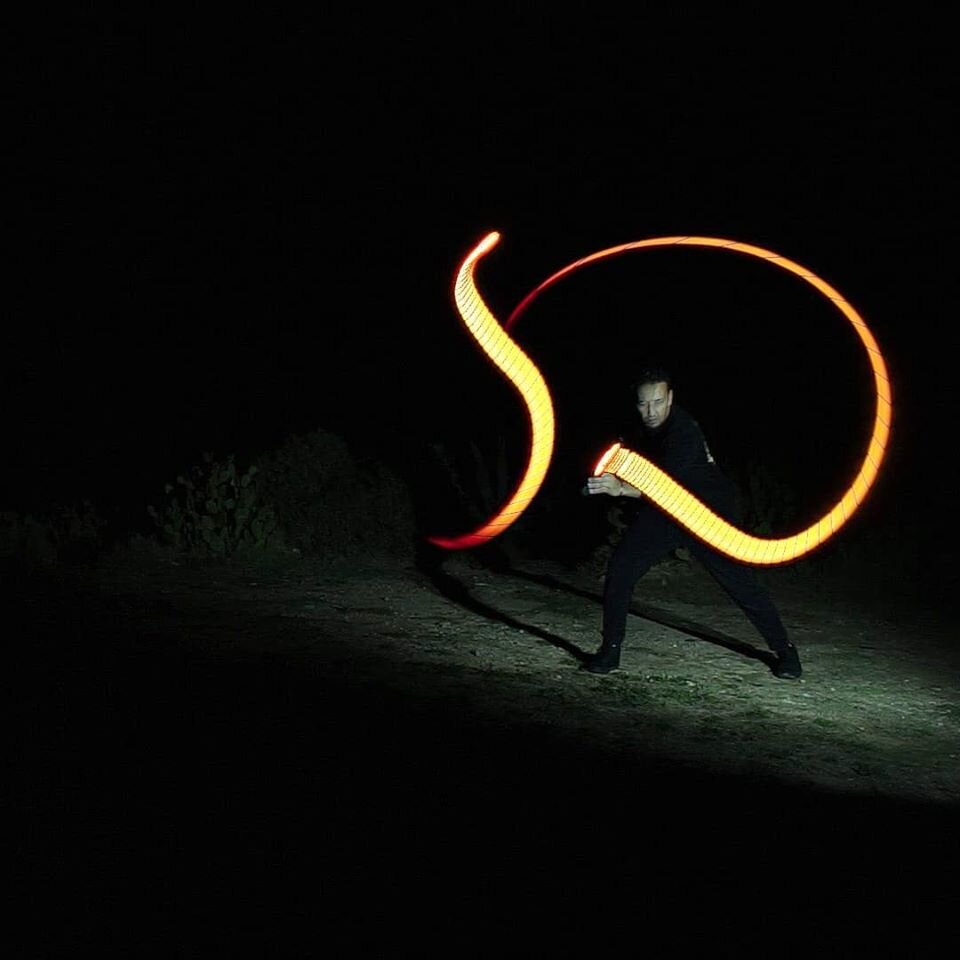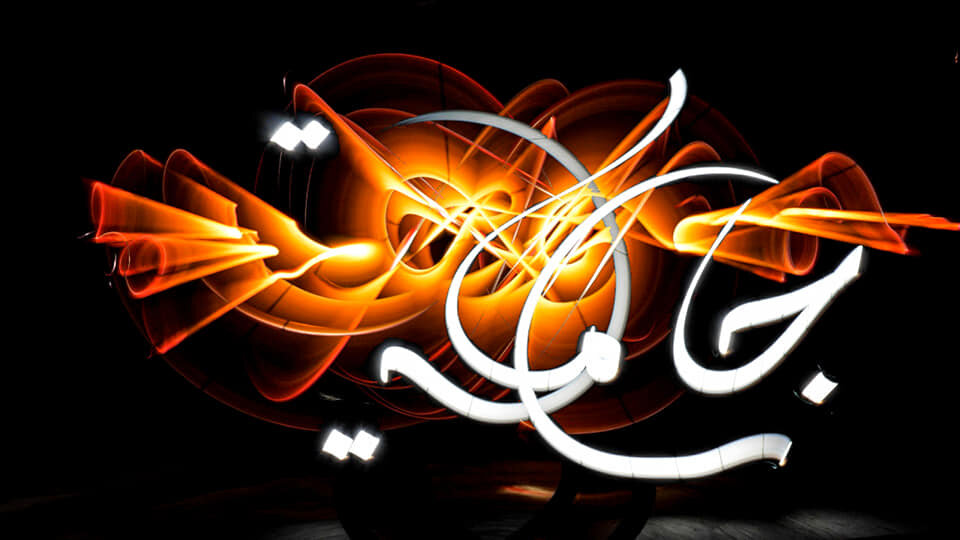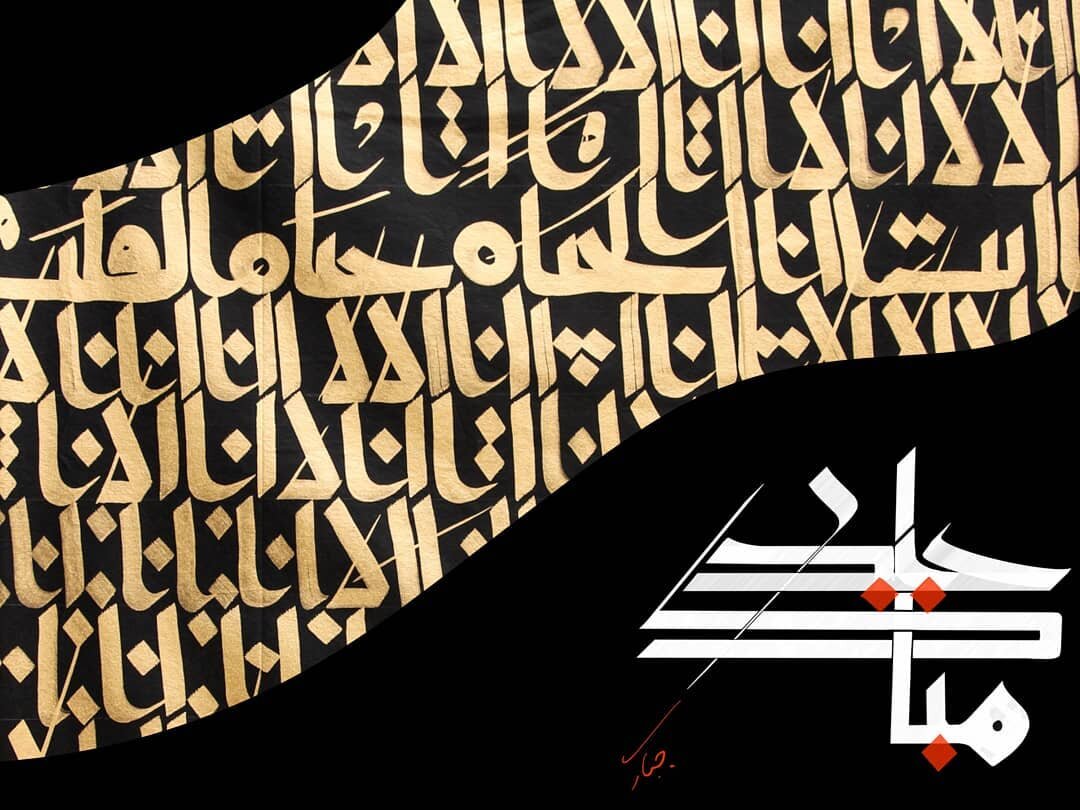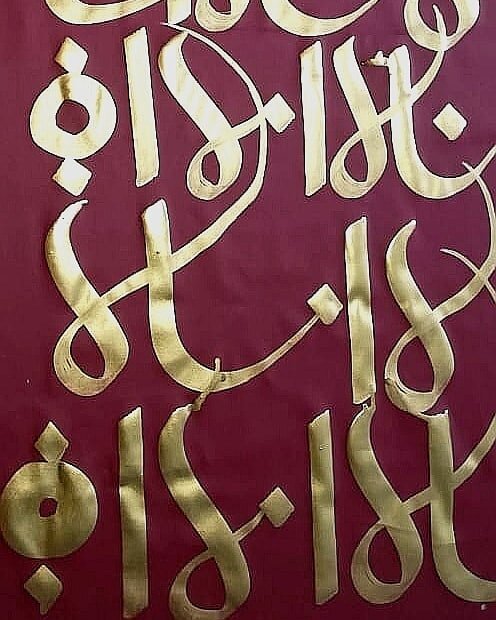Karim Jabbari is highly creative and multitalented. From art installations and calligrafitti to large-scale murals, Jabbari’s work has been featured all over the world. Named one of the top 30 public artists in the world by the International Award for Public Art, Jabbari’s focus is blending modern techniques with ancient calligraphic forms and styles. But, perhaps Jabbari is most well known for a from of art, called Light Calligraphy, that he pioneered.
Using a handheld light and long exposure cameras, he combines light and Arabic letters to create his unique art form. Jabbari has been featured on TED Talks, collaborated with brands such as Land Rover and Yale University and partnered with NYU Abu Dhabi for live light painting. His work can be seen all over the world, from the Middle East to the USA, and Europe and Australia.
Karim Jabbari
I recently had the opportunity to speak with and interview Karim Jabbari. He opened up about his early childhood and inspirations, genesis of his Light Calligraphy style and his future goals. Enjoy his unique perspective and work in this interview.
How has life and work changed during this pandemic?
The situation is tough for everyone. Several of my projects has been postponed. Times are so uncertain. I have done a lot of community work and I have done big projects in my home country in Tunisia. We do projects with the youth. We travel and do workshops in different places, not only in Canada but all over the world.
How did you get into Arabic calligraphy?
Mural - Kufic script
Arabic calligraphy got into my life. I did not choose it. My relationship with Arabic calligraphy is much deeper than most people know. I was around 11 years old and living in Tunisia under dictatorship. My father was a political opponent and my family and I faced a lot of political oppression from the regime. My father was imprisoned. During summer vacations, since I didn’t have much to do I used to dig through my father’s books. He had books on many subjects, including some that were more than maybe more than 300 years old. And those books were handwritten. I developed a special relationship looking at these books and scriptures, and then I gradually started copying the books. And this where I feel in love with what we call the maghribi script and the old Kufic script, because those scripts were all there in those books. And, it started like this. My father was in prison. He spent almost 13 years in prison. So, looking at his books and copying them reminded me of him. It was my way of keeping the connection with my father through copying his books.
Later in my life I perfected my calligraphic practice, but I kept faithful to those original scripts, maghribi and Kufic. These two scripts are the least common scripts as not a lot of calligraphy artists use those. Arabic calligraphy gave me shelter and that in a way that’s how I kept my connection alive with my father and my family, and gave a definition to my childhood. Now it’s my turn to give back to Arabic calligraphy and share my art with the rest of the world.
How did you get into light calligraphy?
I am doing calligraphy in a form that younger generations can connect with. And make it more feasible for them to learn. I needed something different to highlight the beauty of Arabic calligraphy. I wanted to include some modern and urban techniques. So, I started doing graffiti murals based on calligraphy, hence the name calligraffiti which is now a world-wide movement and a lot of people are doing it.
Light calligraphy (Jeddah)
I also saw a technique called light painting, which existed for a long time. It’s basically long exposure photography. In this technique light is used as a writing tool. So, in the beginning I bought a camera and I started practicing in my basement. It was very challenging because you are writing in space and you have no reference point. To add to all of that, you need to write in reverse in front of the camera. I think that was 2008, and I thought to myself that this is very challenging, but I loved it and wanted to take this to a new level.
So I started practicing it on the streets, and people would stop by to see me and asked me if I was crazy waving lights in the air. But, after they saw the results in the camera they would get really excited. That gave me energy to keep moving forward with this art.
For my projects, I now work with engineers and we have our own software. In order for me to stay ahead in my profession, I am always innovating new techniques. It’s a lengthy process of learning and perfecting the art.
To see now that I can do this in all four corners of the world, to do in front of thousands of people and to use it as a medium to show the beauty of the Arabic letter, it’s a feeling that makes me proud.
I offer a workshop that is called “Light in the city,” that’s basically a workshop on the go. We go to various locations in different parts of the world. I teach the basics of light painting and I let the participants explore what they can do. They learn to control their space and movement. In light painting, you have to use your body as a guideline. For example, when you are writing at the level of your eyes, that is a line and based on that you move either up or down in a straight line. In my workshops, the first thing I have the participants do is get to know their space. I have them close their eyes and pretend that they are writing in space.
What are your most important goals?
Title: Refections of the soul (light installation) - 2018
To highlight the beauty of Arabic letters to the entire world. I believe art has a purpose, art is something that serves and empowers people. For my street art murals, I am very selective about the messages I write. When people see my messages I want people to take away something from it, maybe a glimpse of hope, that is worth it for me. Being a street and light artist means I have the opportunity to reach a lot of people. I want people to feel my art. And, I am happy when someone appreciates my work.
As an artist, I see what’s happening in the world and then I translate all my feelings, thoughts and opinions into my artwork. I then let the audience interpret the message. I went from street art to light art and now I am working on sculptures or art installations. In art installations you take interactions with the public to another level. Unlike 2D murals, it adds another dimension to your work and we call them immersive experiences, Currently, most of my projects involve creating these art installations.
How can we support your goals and the arts in general?
As an artist you need to stay creative and focused on your work and not worry about finances. One of the ways to support artists, especially in times like this, is to buy their artwork. Also show interest in their work and promote awareness through panel discussions and talks on social media. We are not doing enough to promote the arts. I am happy when someone reaches out to me and engages with me about my work.
For more information on Jabbari’s work, please visit his website: https://www.karimjabbari.com/
Instagram: @karim_jab; Clothing line: The Two Oceans
All artwork courtesy of the artist
